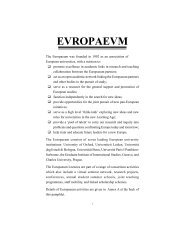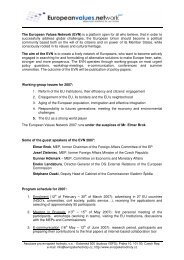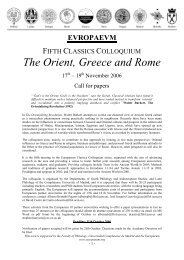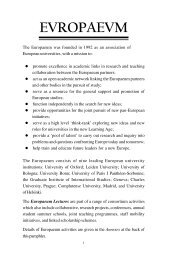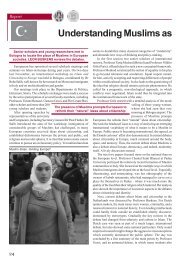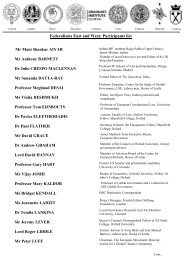Authors Iain Begg | Gabriel Glöckler | Anke Hassel ... - The Europaeum
Authors Iain Begg | Gabriel Glöckler | Anke Hassel ... - The Europaeum
Authors Iain Begg | Gabriel Glöckler | Anke Hassel ... - The Europaeum
You also want an ePaper? Increase the reach of your titles
YUMPU automatically turns print PDFs into web optimized ePapers that Google loves.
on a USD 800 billion “Emergency Economic Stabilization Act” (the socalled<br />
“Paulson Plan”).<br />
Faced with this dramatic situation, European governments – especially in<br />
those countries with financial institutions that were particularly exposed<br />
to the US financial system – had to react. <strong>The</strong> Irish government started<br />
by announcing a guarantee that would “safeguard all deposits, covered<br />
bonds, senior debt and dated subordinated debt” with six Irish financial<br />
institutions. 11 While wholly understandable from an Irish political<br />
perspective and given the desire to avoid bank runs and a meltdown in the<br />
domestic financial sector, this measure ignored the “externalities” of this<br />
decision, notably the fact that Ireland, and the Irish financial system, are<br />
part of the euro area and EU financial market.<br />
If other EU countries were to announce measures of that type, it would<br />
lead to fragmentation of the integrated financial and money markets:<br />
savers would naturally withdraw their savings from banks in countries<br />
where these are not guaranteed by the state and channel them to banks in<br />
countries where they are. This type of government action would also spill<br />
over to other segments of the financial markets beyond retail banking,<br />
because banks whose deposits are backed up by a state guarantee exhibit<br />
a different risk profile, and thus differentiate themselves from other<br />
counterparties in financial transactions.<br />
This, in turn, could lead to financial institutions selecting their<br />
counterparties on the grounds of nationality, e.g. banks only lending to<br />
Irish banks (as these had a state guarantee), and shunning counterparties<br />
from countries which did not provide such guarantees to their banks. <strong>The</strong><br />
latter banks, in turn, would run into problems, and ask for guarantees from<br />
their governments. If this example were to be repeated – thus unleashing<br />
a vicious spiral of financial sector “beggar-thy-neighbour” measures – the<br />
integrated financial market would re-fragment and renationalise into<br />
individual national financial markets.<br />
This was, then, the first channel of functional spill-over, engendering a<br />
coordinated response: the proper euro area-wide functioning of money<br />
markets had to be ensured so as to shore up EMU – what was needed was<br />
a defence of the state of financial integration already achieved. In other<br />
words, it was a matter of safeguarding the degree of negative integration<br />
attained, rather than any proactive integrative steps to tackle the crisis<br />
(positive integration).<br />
Chapter 3 – <strong>Gabriel</strong> Glöckler 49




